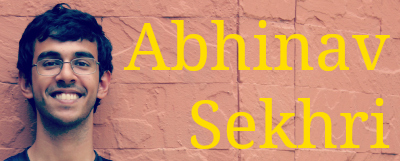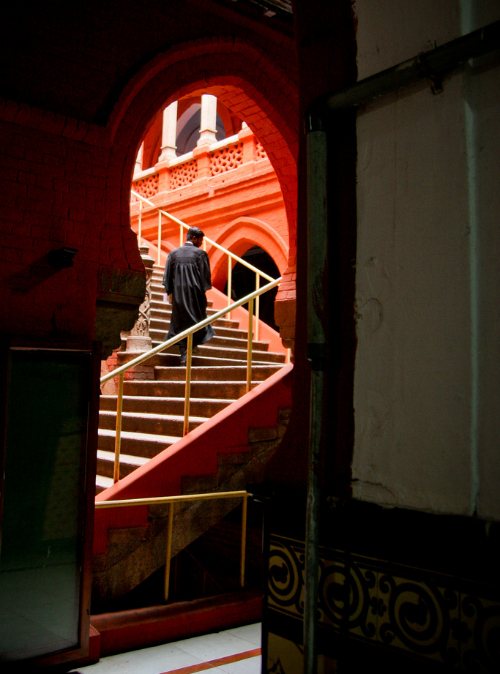 Having explored different connections between practising law in India and the education provided in our law schools in previous posts, the internship stands out as the primary opportunity for law students to meaningfully interact with the real world before they graduate. It also tends to have a big influence on their decisions about the future.
Having explored different connections between practising law in India and the education provided in our law schools in previous posts, the internship stands out as the primary opportunity for law students to meaningfully interact with the real world before they graduate. It also tends to have a big influence on their decisions about the future.
Today, most major law schools make internships mandatory during vacarions and have their own internship rules. These rules will lay out where and for how long students are required to intern, and whether students are required to file reports that are then graded. Students may be required to work at different levels of the hierarchy of courts, and by the end of five years, they are expected to have been adequately exposed to the legal system.
How serious are law schools about grading internships?
Making internships mandatory reflects how important a university considers them, but the manner in which these rules are enforced belies their importance. The administration is quick to check whether the internship lasted a minimum duration and whether entries for each day have been made in the report, but not enough attention is paid to what is actually written. This is a more serious issue in institutions where the internship programme is graded, as it is in NLSIU. There was also something quite amiss about having questions posed at us by academics about our experiences as practising advocates. The lack of any real criteria to evaluate internships meant that very few people knew how they were graded.
The rigid adherence to form also manifests itself in refusing outright, corporate internships as the rules require time to be spent in court. This ends up entirely defeating the purpose of mandatory internships for most, as they wish to gain exposure to various environments to make informed decisions about their careers. Students in turn, are forced to fudge their internship reports, which creates a lose-lose situation. By refusing to acknowledge corporatre internships, law schools turn a blind eye to the commercial realities of today where most students head for corporate jobs.
Reforms should also focus on the content of internships
 Possible reforms must not only focus on the structure of the internship programme (such as expanding the time and allowing corporate internships) but also the content. Laziness cannot be the only reason for the failure to keenly evaluate internship reports. Teachers are not accustomed to the lack of uniformity either. Currently, there is a great degree of randomness associated with the internship experience, as different chambers and firms follow their own systems. Colleges could, perhaps, require the chamber or the firm to teach certain basic skills (such as drafting a contract), depending on how senior the student is. This would also ensure that students do not suffer because of the unpredictability, as can often happen at big offices. Such a step would help students make more informed decisions about their careers and also assist in objectively determining which offices are good places to intern.
Possible reforms must not only focus on the structure of the internship programme (such as expanding the time and allowing corporate internships) but also the content. Laziness cannot be the only reason for the failure to keenly evaluate internship reports. Teachers are not accustomed to the lack of uniformity either. Currently, there is a great degree of randomness associated with the internship experience, as different chambers and firms follow their own systems. Colleges could, perhaps, require the chamber or the firm to teach certain basic skills (such as drafting a contract), depending on how senior the student is. This would also ensure that students do not suffer because of the unpredictability, as can often happen at big offices. Such a step would help students make more informed decisions about their careers and also assist in objectively determining which offices are good places to intern.
Law schools should help their students make good choices
If we do believe that this current post-hoc intervention of law schools with internships is beneficial, should this be expanded to cover the pre-internship phases as well? At the moment, the entire business of securing an internship, whether at a chamber or otherwise, is left to the students. Offices usually treat students on a first-come-first-serve basis, which leads to the absurd need to secure internships for February 2016, in June 2015 itself. From what I last heard, NLSIU was trying out an internship coordinator to verify the internships taken by students, and facilitate securing internships for students who could not find one. In principle, I think the idea is sound; as long as the regulation is restricted to overseeing the process and providing information and not enforcing decisions. Currently, internship decisions are often made based on paltry information and unhelpful factors. For instance, first year law students apply to a senior advocate when all they know is a smattering of tort law, as they think a big name means a good internship. The same is not always true, and even a process to help supply that absent information can reduce faulty decision-making. I’m no fan of paternalism, but sometimes a little help doesn’t hurt.
(Abhinav Sekhri is an advocate practising in Delhi.)








